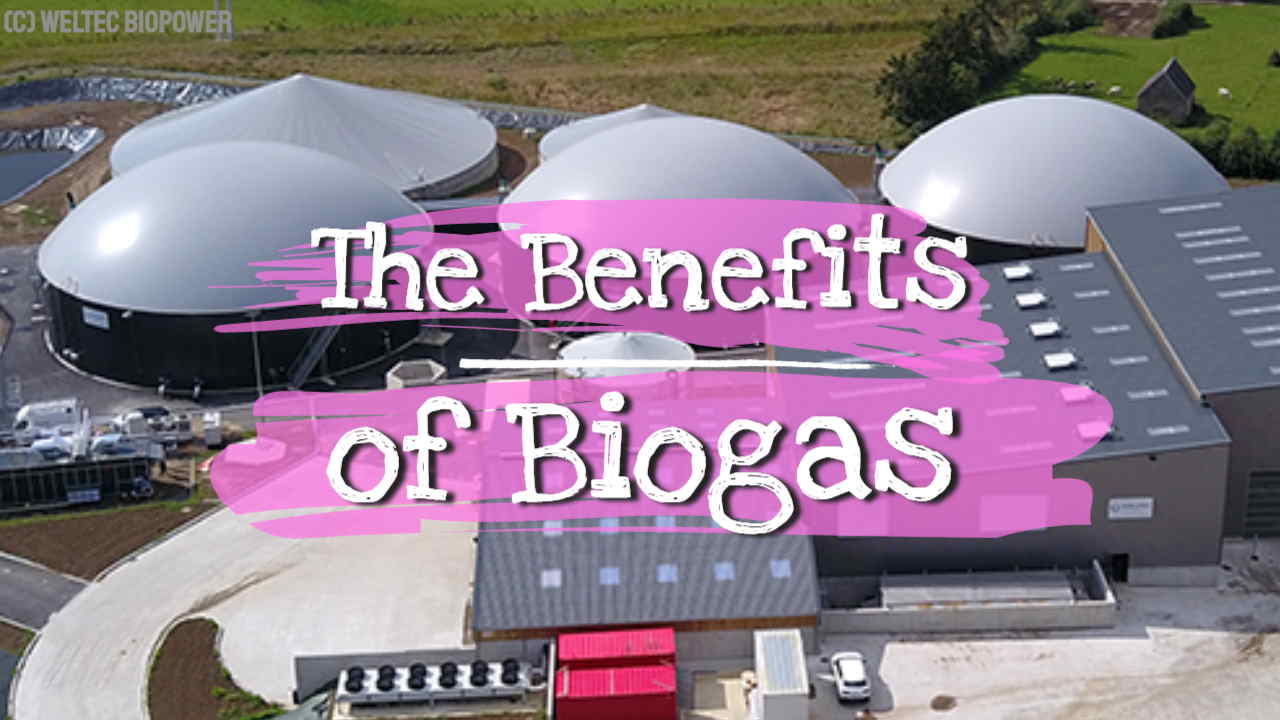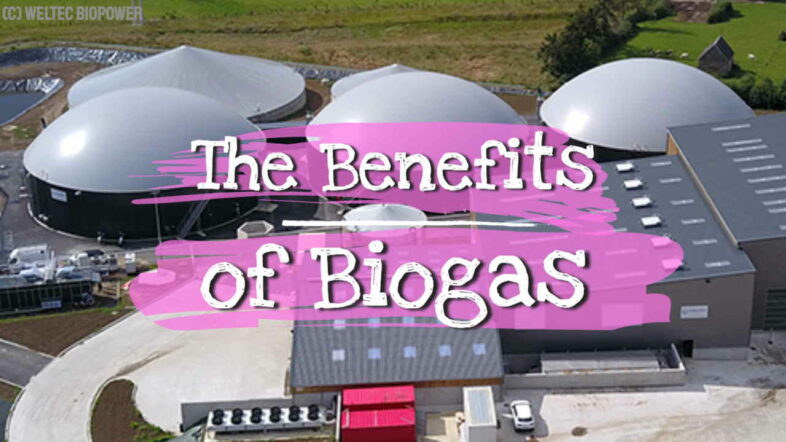The most well-known advantages of biogas are that it is a renewable energy source that can be used to generate electricity, heat, and fuels on-site or sold to a local power grid. It is produced through the anaerobic digestion process, and biogas production is growing steadily, as more people are setting up biogas plants to produce biogas.
Denmark, for example, sources more than 40% of its natural gas needs from biogas and plans to make all of its natural gas this way by 2030, effectively cutting off its Russian gas supply. In these days of climate emergency, biogas is regarded as a sustainable renewable source of energy because its production is based on waste generation, an endless process.
Produced in Biogas Plants
A biogas production plant converts organic waste (vegetables and animals, liquids or solids) to energy in a controlled environment. Any organic waste (vegetable or animal, terrestrial or aquatic, liquid or solid) is digestible and can be converted into biogas.
Biogas from manure is composed of more than 50% methane, the primary component of renewable natural gas. Manure digester systems can: Meet on-farm energy needs.
Biogas, like other renewable energy sources such as solar and wind power, can help us reduce our reliance on fossil fuels, such as coal, oil, and natural gas. But, additionally it can also:
- generate reliable, flexible power 24/7
- manage intermittent renewable power supplies through means of storage and flexible power
- improve/support local infrastructure and via quality upgrading to renewable natural gas (RNG) (also called biomethane) can be used for injection into the natural gas grid. Renewable Natural Gas (RNG) procured from biogas can be used interchangeably with natural gas
- deliver ‘green' renewable energy through existing infrastructure be compressed for use as transportation fuel, or
- provide the direct replacement of fossil-sourced natural gas in household heating, or industrial, commercial and institutional processes
Reduces the use of landfills
Separating organic waste from trash for biogas production reduces landfill waste significantly. Separating organic waste from landfills for biogas production significantly reduces water and soil pollution. Rather than letting waste rot in a landfill, utilizing it and converting it to biogas is far more beneficial.

Organic waste is treated and disposed of naturally, and decomposition is controlled
One of the most significant advantages of biogas is the ability to produce energy in an entirely natural form from waste materials that would otherwise not be used by any other industry. Another advantage is that the biogas production process is natural, and no net energy is required in the process because instead of using a fossil fuels the equipment powers itself. The main disadvantage of biogas plants is that the systems used are inefficient, as they may only generate enough biogas to meet a few power needs. The use of biogas plants is currently the most effective control over organic decomposition processes.
Improvements in Efficiency Will Bring More Biogas Benefits
One of the keys to maximising organic waste utilisation and thus increasing biogas plant output is biomass pretreatment. Biogas produced from organic waste emits significant amounts of carbon dioxide into the atmosphere, but that CO2 is removed when the next crop grows. This does not happen when the source is fossil fuel based because the CO2 from burning takes geological time to revert back to coal or oil.
Carbon dioxide that is produced during anaerobic digestion when purified, can be compressed and can be used by industry in place of non-renewable CO2.
The anaerobic digestion energy (biogas) can also be used directly to prepare food by burning it in a biogas stove with oxygen.
Organic Matter is Recycled
Food wastes, animal manure, wastewater, and crop residue are some of the organic materials used for biogas.
Biogas systems recycle organic matter through anaerobic digestion, producing biogas that contains both energy (gas) and valuable soil products (liquids and solids).
Animal manure is converted into biogas, which is used to generate electricity and heat, gas, which is used to fuel cars and cook, and digested to produce fertiliser. Biogas is used to generate electricity, and it is further processed to produce biomethane (which is used as a vehicle fuel).
Fertiliser is the Main Biogas Byproduct
Digestate is a byproduct that is used as fertilizer. It is a perfect supplement to, or substitute for, chemical fertilizers. The fertilizer discharge from the digester can accelerate plant growth and resilience to diseases. Chemical fertilizers can be harmful to the soil as well as for the environment as a whole. They also require a lot of fossil fuel energy to dig out of the ground and to transport them before they can be used.
Generates Electricity
Biogas can be used to generate electricity to power barns or homes, heat to heat sheds and on-site greenhouses, energy to cool milk, and fuel to power on-site vehicles. Biogas, once captured, can produce heat and electricity for use in engines, micro turbines, and fuel cells. Using biogas reduces reliance on traditional energy sources and is one of the options for clean, sustainable power. In addition to producing electricity, it also produces heat which can also be exported and used for example to heat the radiators in people's homes.
The Biogas Industry Produces Jobs
In India, the biogas industry creates more than 10 million man-days jobs each year in rural areas where employees will spend their income making a rising demand in the local economy and these people buy homes raising housing value and yet more employment as a result.
Reduces Deforestation
The renewable energy from biogas when used for cooking in developing countries reduces the demand for kindling wood for kitchen stoves. This in turn reduces pressure on local woodland to provide wood. In some areas, it can allow the regrowth of trees for shade and improved biodiversity.
Benefits of Biogas in Summary
All of these critical functions—generating renewable energy, reducing solid waste, managing nutrients, reducing GHGs, and mitigating contamination risks—can be accomplished economically and sustainably by biogas facilities.
Because of the uniquely controllable anaerobic digestion process, biogas plants can optimize their operating, energy, and manufacturing efficiency, improving waste biomass utilization while avoiding loading, mixing, and low digestibility issues.
Fossil fuels contribute to climate change, but biogas actually reduces greenhouse gas emissions by preventing additional fossil fuel burning, and it is, therefore, a great way to combat global climate change.
Biogas plants significantly curb the greenhouse effect. The plants lower methane emissions by capturing this harmful gas and using it as fuel.



